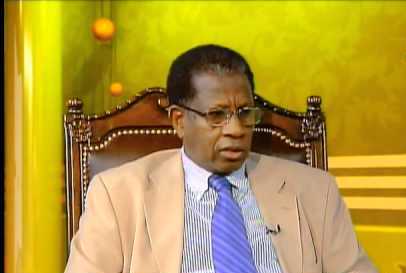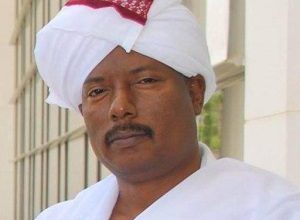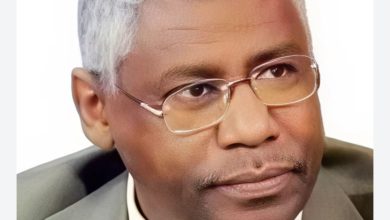Anatomy of Revolution: A Reading into Paths and Consequences of Sudanese Revolution (1)

By: Al-Tijani Abdul Qader Hamed
April 6, 2020
As one year has passed today since the Sudanese revolution, it is appropriate for us to pause and take a closer look at the nature of this revolution, its paths, the difficulties it faces, and how to confront these difficulties. Many historians, sociologists, and political scientists have been busy since the middle of the twentieth century in developing theoretical models that help explain the major global revolutions (British, French, American, Russian, and Chinese), and in identifying the stages of their development, the crises they face, the successes achieved, and the failures that befall them.
I have occupied myself for some time, like other researchers, with studying the Arab Spring revolutions, which made me re-read what was published in this field, which is so numerous that it is difficult to enumerate it. In this article, I would like to focus on aspects of a model presented by the American professor Crane Brinton in his famous book published in the late 1930s, entitled Anatomy of a Revolution (and my friend, Professor Mohammad Taher Al-Misawy, may God protect him, graciously provided me with an electronic copy of a good Arabic translation that I showed the professor Samir Abdel Rahim Chalabi)
The main conclusion that Brinton reached in this book is that revolutions usually end where they began. This means that revolutions in their first renaissance succeed in overthrowing the old, outdated systems, but when they are faced with the difficult task of reforming existing institutions, or creating other alternative institutions… Disagreement soon erupts within the ranks of the revolutionaries, and quickly escalates into a kind of “revolutionary crisis” that in turn leads to the dictatorship of the “strong man,” where the revolution begins to devour its own people, and then is drawn into internal and external wars that make everyone flee the revolution in search of peace and stability. But that does not mean that the revolution is useless, or that it does not change anything. A revolution usually introduces new ideas, transforms power structures, and carries out many reforms, but it is the ruling class that will hold the keys to power in the final outcome.
I know, of course, that there is a lot of criticism to which the proposed model has been subjected, from those who say that it does not explain all cases, to those who say that the author is arbitrarily interpreting, to those who say that the author does not have a theory about history (which caused the author to make some revisions and amendments in later editions of the book). ). However, these criticisms did not prevent other researchers from being inspired by their basic ideas and in its light studying the Cuban Revolution, for example, or other Third World revolutions. I saw someone (David Eden, 1974) use this model to analyze the Saudi revolution led by King Abdul Aziz Bin Saud in the Arabian Peninsula (1902-1953), to reach results similar to what the Brenton model predicted, but he also reached some clear differences between the Peninsula Revolution and Arab and the revolutions of the West. This confirms what the writer meant, that the success of the model does not lie in the complete “match” or “similarity” between its statements and the cases to be interpreted, but rather it is sufficient for the model to indicate the most important variables, help in asking questions, and guide the type of information that should be collected aan analyze. But let me first provide a summary of the salient points of Brinton’s model, and then I will try to raise in its light some questions related to the paths of the current Sudanese revolution, and whether there is a kind of “similarity” between it and other revolutions, with some comments.
Brinton believes that any of the revolutions that he studied usually goes through four stages: the stage of revolutionary fever, the stage of terrorism and violence, the stage of strong men and stability, and the stage of return to the previous situation.
(1) As for the first stage (the stage of revolutionary fever), it returns to the state of discontent felt and expressed by the middle class in society. According to him, it represents the driving force that drives the revolution, due to the economic harassment imposed by the government. The escalation of revolutionary fever may be facilitated by the presence of an incompetent government, a foolish ruler, or a political party devoid of intellectuals who represent the conscience of the nation. But once the first stage ends with the fall of the old regime, the revolutionary honeymoon ends, as the conflict moves within the revolutionary forces. Disagreement usually breaks out between revolutionaries over what should be removed from the old regime, how to remove it, the quality of the new regime, and how to build it. These differences will exacerbate and crystallize around two categories of revolutionaries: the group of moderates who will form a temporary transitional government, and the group of extremists who will surround the interim government from the outside and form revolutionary committees or local councils. These people are usually better organized and more capable of mobilization and impetus, and they gradually turn into a kind of competing government that does not seek to replace the transitional government, but rather waits for a “revolutionary crisis” to occur, during which the transitional government is defeated, and the competing government moves automatically to replace it.
(2) Since the transitional (interim) government has inherited the consequences of the old regime, and is composed of multiple and discordant political groups, it will have no source of power other than the worn-out government apparatus and the crumbling institutions of the old regime, which means that it will be unable to change the situation with the required speed and efficiency. It will begin to lose popularity and revolutionary support, in contrast to the position of its competing revolutionary groups, which claim to truly represent the spirit and purity of the revolution without directly bearing responsibility.
(3) The revolutionary crisis reaches its peak when the moderates (accommodators) are unable to manage the state, change the economic conditions, and develop a new constitution for the country. This stage ends when the extremists succeed in creating a “revolution within the revolution.” That is, by causing a kind of “internal coup” within the ranks of the revolution. This victory is usually achieved under the leadership of a strong man (Cromwell in the British case, Robespierre in the French case, and Lenin in the Russian case). With the strongman’s control (through a revolutionary council, or something similar), the rule of violence and terrorism begins, and the revolution begins to “eat its own children,” as the moderates are accused of betraying the revolution, and some of them flee into exile, and some are placed in prisons, or taken to the guillotine, but those who were among them Lucky, disappear from sight and are forgotten. In such turbulent circumstances, the revolutionary government may enter into a civil war or a foreign war.
(4) As for the final stage, it represents a slow return to a state of calm, which is the period in which a new tyrant will rise to power, and in which the extremist revolutionaries will be suppressed, thus paving the way for a period of “recovery” and for the country to enter the recovery stage.
Brinton realizes that there is difficulty in establishing an accurate classification of the competing revolutionary forces, and therefore he sees himself limiting himself to giving them general characteristics, referring as “moderates” to those who assume executive tasks (and who then respond to the constraints of reality and accept compromises and half-measures). As for those who reject half measures and half solutions, and call for exceptional courts, revolutionary police, and the suppression of opponents, he refers to them as “extremists.” To confirm this, he refers to the case of the French Revolution, where the moderates controlled the government apparatus, while their Republican opponents controlled the network of Jacobin associations, through which they were able to control local government units and lead campaigns of violence and terrorism. It also refers to the case of the Russian Revolution where dual sovereignty was more prominent; A temporary government was formed with a broad representation of the socialist segments with a moderate orientation. On the other hand, the “Bolsheviks” and some radical groups allied with them emerged, and they were able to control the network of “Soviet” councils. The moderation phase in the Russian Revolution ended with Stalin seizing power and removing Trotsky to the exile position.
In an attempt to identify the reason for the failures of the moderates, Brinton believes that their control over the government apparatus is in itself a source of weakness, due to their lack of experience, which causes them to make mistakes after mistakes, thus losing the popular support they had gained as revolutionaries opposed to the old regime, and they face those who then with increasing suspicion from the general public who had innocently placed high hopes in them. Based on the above, he describes the moderates as semi-revolutionaries, and notes that in three of the four revolutions they were forced to step down from power, sooner or later, to die or flee into exile. On the other hand, he describes the extremists as complete revolutionaries. They despise half-measures, are willing to make tough decisions, do not mind forming exceptional courts and revolutionary police to suppress dissent, and seek to organize and plan the production and distribution of wealth through state agencies.
These are the features of the model in brief. Can we benefit from it in studying the Sudanese revolution? And how? It is important that we hasten to stress that the purpose is not to “match” the model’s statements with the paths of the Sudanese revolution (or other revolutions). We know (as Brinton knows) that every revolution has its own characteristics. Rather, the purpose is to benefit from the model in formulating appropriate questions that It leads to a deeper understanding of the Sudanese revolution. For example, we might ask: To what extent can we say that the old regime has fallen as a result of economic reasons – with corruption in the administration, an increase in popular anger, and paralysis in the state apparatus and its leadership? Was it the middle class that moved the revolution? What are the characteristics of the middle class in the current Sudanese situation? Are there signs of splits among the revolutionaries? Do the features of the “revolutionary crisis” that the model expects appear on the horizon, which paves the way for the emergence of the “strong man”? Who is the “strong man” in the current Sudanese situation? What is the source of his strength? Are the resistance committees the beginning of the Bolshevization of the revolution, and is the revolution generally heading towards peaceful democratic development, or is it retreating towards war and dragging towards a foreign war ?
To be continued



